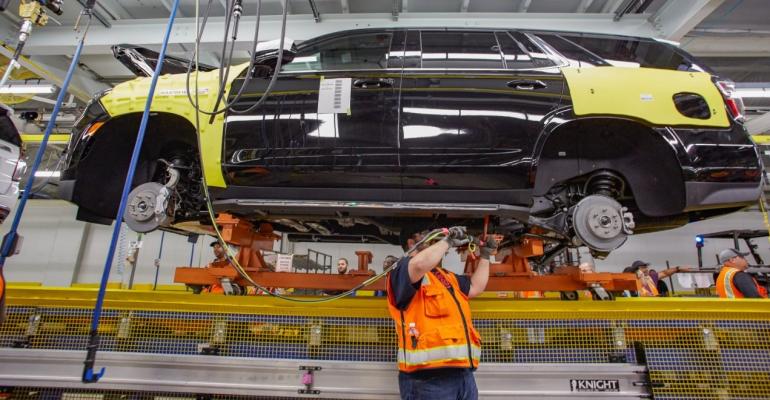Automakers once vied to introduce redone vehicle models every five years or so, with midcycle refreshes along the way.
The thinking for the relatively rapid rotation: Fresh product rules the marketplace.
But expect auto companies to elongate those product cycles, both to save money and redirect resources to other initiatives, such as electric- and autonomous-vehicle R&D, trend trackers say during a Society of Automotive Analysts webinar.
“We’re seeing extensions of vehicle life cycles,” says Joe Langley, IHS Markit’s associate director-North America light vehicle production. “A few years ago, the race was for five-year, even four-year cycles.”
Going forward, he foresees “seven to 10 years with midcycle updates.”
Automakers suspended production in the spring amid the COVID-19 crisis, fearing widespread infection among factory workers. Plants have reopened with health precautions taken. But OEMs in many respects are “still in the restart stage,” says Langley, who nonetheless is impressed by how adeptly factories have resumed operations. It hasn’t been as simple as turning the lights back on.
The temporary plant closures led to inventory shortages. That’s because even though production had stopped, sales didn’t, although they were way off compared with pre-virus projections.
IHS now predicts North American production of 12.8 million vehicles this year. That’s 3.5 million fewer than forecasts in January, before COVID took hold. The forecast for 2026 is 16.7 million units.
Automakers this year are launching fewer vehicles than normal, notes webinar panelist George Augustaitis, director-automotive industry and economic analysis for CarGurus, an online automotive marketplace.
“We’re seeing delays in launches,” he says, citing production and marketing issues. “It’s tough to launch a vehicle now.”
COVID’s economic impact hit low-wage earners the hardest, he says, referring to the immediate outlook for new-vehicle sales. “They have not fully returned to the new-car market.”
In contrast, few high-wage earners ever left that market while middle-income people are coming back, Augustaitis says.
Many people of limited means who still once bought new vehicles will migrate to the used-car market, he predicts. “They are leaving the new-vehicle market. The most price-sensitive consumers are the most affected” by the economic damage the virus has wrought.
Although COVID may have accelerated the swing from new-car to used-car buying among some budget-minded consumers, the virus didn’t start the shift. New-car affordability sending many consumers to the used-car lot has been an issue for a few years now.
In addition to lengthening product cycles, automakers also are expected to reduce model trim levels to cut costs, analysts say. “It goes a long way economically,” Langley says.
It also allows automakers to redirect more resources to electric- and autonomous-vehicle development, says Kevin Riddell, LMC Automotive’s senior manager-Americas powertrain forecasting.
LMC in January had predicted U.S. EV sales of 288,000 this year. After COVID took root, the firm downsized that forecast to 199,000, or 1.5% market share.
Riddell is bullish on EVs. “There are a lot of tailwinds,” he says while forecasting growing sales. “A lot of EV products are in the pipeline. Incentives continue. OEMs (particularly companies such as General Motors and Volkswagen) are heavy into electrification research and development.”
LMC predicts EV sales in the U.S. will hit 1 million in 2024.





